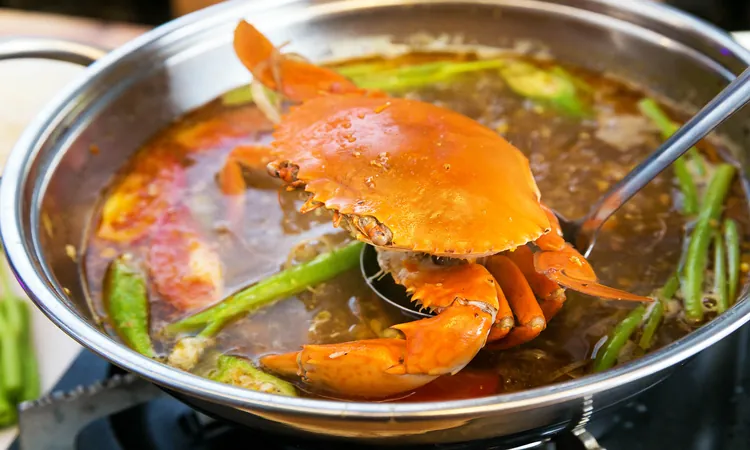
Disturbing New Evidence Demands Immediate Action: Should We Stop Boiling Crabs and Lobsters Alive?
2024-11-27
Author: Wei
Recent studies are raising critical questions about the treatment of crabs and lobsters, creatures often boiled alive for our culinary pleasure. Have you ever paused to consider whether these marine animals experience pain or fear during this process? The science suggests it's time to rethink our practices.
Dr. Lynne Sneddon, a renowned zoophysiologist at the University of Gothenburg, argues for an urgent reassessment of how we handle shellfish. “We need to find less painful ways to kill shellfish if we are to continue eating them. Because now we have scientific evidence that they both experience and react to pain,” she stresses.
The Fascinating World of Crustaceans
For over 500 million years, crustaceans—including crabs and lobsters—have inhabited our planet. These remarkable creatures, characterized by hard exoskeletons made of chitin, segmented bodies, and jointed limbs, have diversified into thousands of species adapting to varied environments from ocean depths to freshwater and terrestrial areas.
Crustaceans are not merely seafood delicacies; they play crucial roles in their ecosystems, serving as both predators and prey, thereby ensuring a delicate balance in marine and freshwater food webs. Their significance extends to human economies, where they represent a major food source and are invaluable in scientific research related to regeneration, development, and environmental health.
Revealing the Painful Truth
Traditionally, the belief that crustaceans like crabs and lobsters experience pain has been based on behavioral observations. Researchers noted that these animals displayed distress behaviors in response to harmful stimuli. However, the recent research led by PhD student Eleftherios Kasiouras at the University of Gothenburg provides solid evidence. By measuring brain activity in shore crabs using EEG-style recordings, the study revealed that crabs possess pain receptors in their soft tissues, indicating they indeed respond to painful stimuli.
Interestingly, crabs exhibited different responses to physical pressure versus chemical stress, highlighting a complex pain signaling system in these creatures. The implications extend beyond shore crabs, leading researchers to posit that other crustaceans, including lobsters, likely possess similar nervous systems and may also experience pain.
Time for a Cultural Shift
Despite compelling evidence of crustaceans' capacity to feel pain, current regulations in the European Union offer these animals no protection under animal welfare laws. This legal loophole allows practices that could cause them significant distress. As advocates like Dr. Sneddon push for more humane treatment, it’s crucial for the industry and consumers alike to support ethical practices.
Advocating for humane methods of handling and killing crustaceans is vital. New technologies and techniques must be developed to minimize their pain and suffering. Consumers can also influence change by supporting businesses that prioritize ethical treatment and pushing for better regulations.
A Compassionate Future
As awareness of crustaceans' capacity for pain spreads, it is imperative we adapt our behaviors and attitudes toward these living creatures. This recognition is not simply about compliance with laws but about fundamentally shifting our mindset to treat all beings with the respect they deserve.
With this ongoing dialogue, both industries and individuals play pivotal roles in promoting more humane practices. As we understand the implications of our choices, we pave the way for a more compassionate society—one that honors the rich, 500-million-year legacy of crustaceans on Earth.
The call for action is clear: as consumers, researchers, and advocates, we must work together to ensure that our choices reflect a compassionate treatment of all life forms, starting with those creatures often overlooked in our culinary traditions.



 Brasil (PT)
Brasil (PT)
 Canada (EN)
Canada (EN)
 Chile (ES)
Chile (ES)
 España (ES)
España (ES)
 France (FR)
France (FR)
 Hong Kong (EN)
Hong Kong (EN)
 Italia (IT)
Italia (IT)
 日本 (JA)
日本 (JA)
 Magyarország (HU)
Magyarország (HU)
 Norge (NO)
Norge (NO)
 Polska (PL)
Polska (PL)
 Schweiz (DE)
Schweiz (DE)
 Singapore (EN)
Singapore (EN)
 Sverige (SV)
Sverige (SV)
 Suomi (FI)
Suomi (FI)
 Türkiye (TR)
Türkiye (TR)